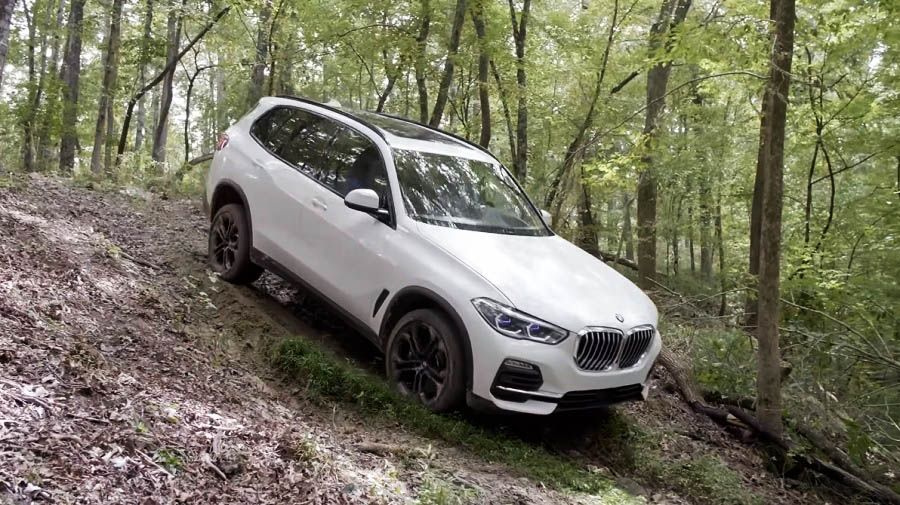Hill Descent Control or HDC is helpful to drivers when traveling down steep hills on loose or slippery surfaces, such as gravel, snow or wet grass.

When the system is active, the vehicle will stay below a speed set by the driver without having to depress the brake pedal. The brake lights will illuminate automatically to warn any vehicles traveling behind.
While HDC is controlling the speed, the system automatically distributes the braking force to the individual wheels. This improves vehicle drivability and stability and allows the driver to concentrate on steering.
Activating Hill Descent Control
To activate Hill Descent Control, press HDC button located on the center console near the gear shifter. The LED illuminates and a symbol with the set speed is displayed in the instrument cluster. Gray indicates HDC is on standby. When the symbol turns green, this indicates the system is actively reducing the vehicle speed.

Change HDC speed
The desired speed can be changed between 2 and 20 miles per hour using the rocker switch on the left side of the steering wheel. Press up to increase the speed and down to decrease.
While HDC is controlling the speed, you can also reduce the speed by depressing the brake pedal.
Note: Park distance control will be deactivated when HDC is in use.
Deactivate HDC
Press the HDC button on the center console again to deactivate. The LED on the button will then go out.
The system also automatically deactivates once the speed reaches approximately 25 miles per hour.
Malfunction:
If a message is displayed in the instrument cluster “HDC is not available”, it can mean that because of high brake temperature the HDC is unavailable. Wait for brakes to cool down.
What is Hill Descent Control?
The Hill Descent Control (HDC) and Downhill Speed Regulation (DSR) is primarily for sport utility vehicles used (SUVs) and off-road driving stability aid when traveling downhill on loose ground. HDC controls the speed of a vehicle with the help of braking intervention and engine drag torque and thus keeps it constant, depending on the surface, at an intended speed.
When driving downhill, a relatively slow and safe downhill speed is automatically regulated electronically by the system, similar to a reduction gear, at which the vehicle masters a downhill trip without overbraking, especially the rear axle and the associated loss of cornering. The driver only has to steer, not brake or accelerate in order to drive the vehicle down the slope or mountain in a stable and safe manner. Additional acceleration is still possible. The physical relationship is analogous to the function of the ABS: only a rolling wheel can build up enough forces for lateral guidance on any surface and thus leads to a controlled descent.
This electronic aid can partially, but not always, replace a reduction gear and thus save costs.










Last winter I went on a long drive and also drove on really great snow tracks in the mountains. My mother-in-law invited her family to a mountain inn at an altitude of 1100m and that at the worst onset of winter. Well, when she made the reservation, she couldn’t know.
Uphill there were no problems on the road, which had been cleared several times with about 5cm high snow. Downhill I find the automatic mechanism fascinating again and again because even on steep downhill no manual intervention is actually necessary. As long as you don’t step on the gas, the automatic is in first gear and the full engine brake is available. With small throttle movements the first gear is still there, with more throttle it is shifted up – ingenious. Only when it gets extremely steep do I activate the hill descent control and then mostly get by with the 10 km/h in turns.